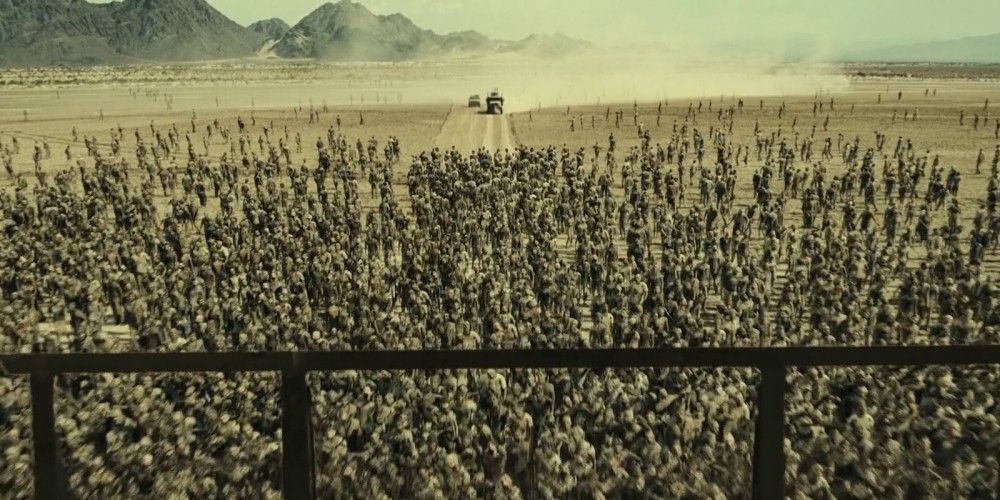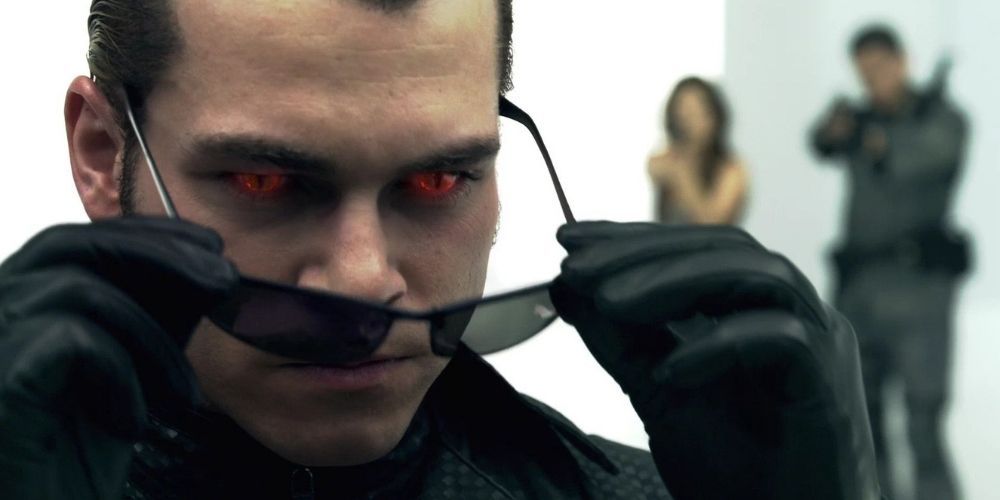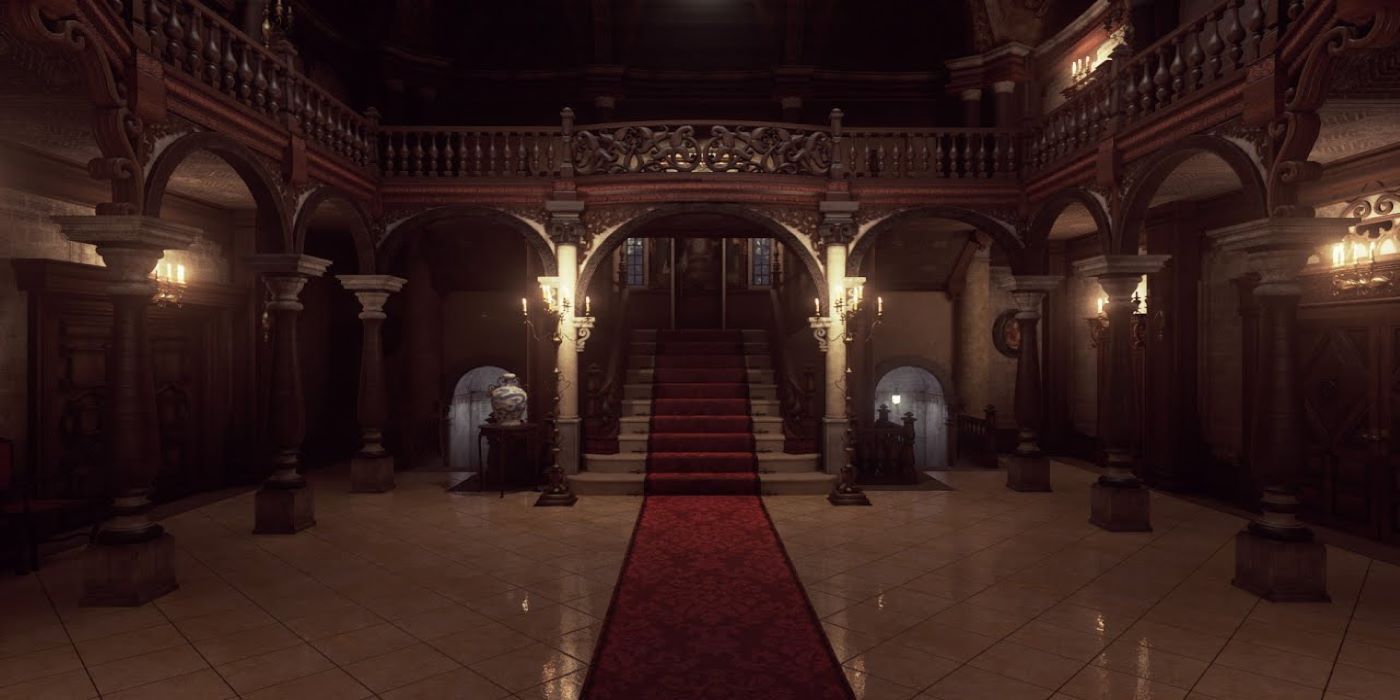
As Lady Dimitrescu stole the spotlight again this week, perhaps Resident Evil reboot director Johannes Roberts took a moment to consider a late revision to his script to include the internet’s favorite tall woman. Despite her popularity, it’s unlikely that the breakout star of Resident Evil Village will grace the upcoming live-action reboot. However, there’s still plenty of opportunity to please fans ahead of the film’s release on September 3rd.
2021 is the 25th anniversary of the franchise and it’s fair to say it’s having a resurgence after some turbulent times. Those troubles started with Paul W.S. Anderson’s maligned live-action film adaptations which, despite box office success, were derided by fans and critics alike. Here are the lessons the reboot hopefully learned from the previous movies, as fans hope to avoid a repeat.

One of the most integral aspects of Resident Evil is atmosphere. Footsteps echoing down a poorly lit corridor, the first person view opening a door, dull moaning in the distance or a sudden shriek from an unseen source, these are hallmarks the franchise has used to unsettle players and viewers alike.
Recent games, Resident Evil VII, Resident Evil 2 Remake and Resident Evil 3 Remake, have returned to the tried and trusted horror roots after a dalliance with a more action-orientated approach. Unfortunately, there’s scant evidence of Anderson’s film franchise understanding of the importance of tone. Big battles in broad daylight with machetes and mutants is the fundamental opposite of what Resident Evil is about.
The reboot should avoid the type of scenes where mutants shoot mounted machine guns or Alice slices through umpteen Umbrella soldiers with katanas. Instead, lean into claustrophobic environments and produce a threatening atmosphere. Examples are scarce in Anderson’s film series, though there are a couple to take inspiration from. The anxiety evoked in the final two minutes of the first Resident Evil movie is one of the few moments the original franchise got right. While the horror of Resident Evil: Apocalypse, where zombified children manage to corner and devour one of the protagonists, is far more in keeping with the tone of the games.

While Resident Evil is notorious for its schlocky B-movie elements, the characters are held in high regard among fans. Remaining faithful to the games is crucial to keeping fans invested in the latest live-action attempt. Each time the Anderson film franchise integrated a new character from the video game series they were predominantly deployed for aesthetic purposes, capitalizing on fan lust to see their favorites on the big screen. The introduction of Leon in Resident Evil: Retribution is purely done for marketing purposes. Rather than develop the character in any meaningful way, Leon is reduced to a facsimile in appearance alone.
In the same movie, Ada Wong and Barry Burton both appear, along with Jill Valentine. Each of them sport iconic outfits from the game series, but there’s little intention to build out their character beyond playing second fiddle to Alice. Not to be deterred from alienating fans, Anderson decides to have Leon and the remaining video game protagonists killed off-screen between the penultimate and final movies, focussing instead on Alice’s battle in the aftermath.
The reboot series will do well to avoid making similar mistakes if they hope to keep fans on board. Thankfully, due to the cast announced it seems likely that they will inject much more character into the reboot.

The Resident Evil reboot has a wide range of enemies that would be perfect for the big screen. However, the T-Virus, and the zombies it creates, will always be at the core of the franchise. The rotting corpses are at their most menacing when they meander through Raccoon City’s arterial alleyways, cornering the likes of Jill and Leon when supplies are minimal.
Resident Evil has never been about being hunted by hordes in the hundreds, yet Anderson’s movies seemed to opt for excess in this department. It may sound paradoxical, but there’s greater suspense in scenes where characters must navigate through a handful of shambling enemies. This is something the recent video game remakes have managed to capture masterfully, each zombie feels like a threat when poorly managed – which is often enforced by the hostile environment. Translating this to the big screen can be difficult and examples within Anderson’s films are scarce.
However, there is one good example in the 2001 original as the group of Umbrella soldiers encounter zombies for the first time. The protagonists fail to manage the initial threat of a few zombies and the situation spirals out of control resulting in one casualty and another character bitten. The scene builds tension as more zombies slowly appear to overwhelm the group, with no obvious escape route and barely enough supplies to keep themselves alive.
Sadly, Anderson’s films frequently opted for spectacle over suspense, zombies could be overcome with martial arts and when their numbers grew, along came bigger guns to eviscerate any tension. Ultimately the biggest lesson the reboot can take from Anderson’s films is that it barely uses the zombies to good effect – a cardinal sin when it comes to Resident Evil.

The upcoming movie looks set to return to the familiar haunts of Raccoon City which is bound to delight fans. Set photos have confirmed that the Umbrella mansion is likely to feature, along with the Raccoon City Police Department. Though Anderson’s movies spent most of their time in transit across a desolate America, with the odd exception, each environment lacked personality. After the unique design of Umbrella’s underground research lab, known as the ‘The Hive’, few settings felt lived in. Anderson tried the desert, an oil tanker and even a research facility which had a variety of zones, but none of them managed to produce an organic threat.
Whether it be the Spencer mansion, the Raccoon City Police Department or the Baker’s home in Resident Evil VII, each resonate because they compliment the horror of the various monsters and zombies contained within. The locations in Anderson’s movies lacked the personal touch that is so often associated with the games. Assuming Roberts’ reboot becomes a new franchise, it would be exciting to see more of Raccoon City before it’s inevitable destruction, but most importantly and somewhat ironically, it has to feel alive enough that every nook and cranny is a threat.
It could be argued that Anderson’s Resident Evil movies resembled the T-Virus. At first, they were horrifying before mutating and becoming something truly grotesque – sadly, for all the wrong reasons. If Roberts’ reboot is to become a successful franchise, it has to learn from the missteps the original film series made. Anderson’s movies lead the entire franchise into serious decline, but it does provide the reboot with a plethora of lessons to learn about it’s failure, just as the recent resurgence of Resident Evil video games shows.
The Resident Evil reboot releases September 3rd, 2021.

facebook 查詢:
24 hours enquiry facebook channel :
https://www.facebook.com/itteacheritfreelance/?ref=aymt_homepage_panel



Leave a Reply